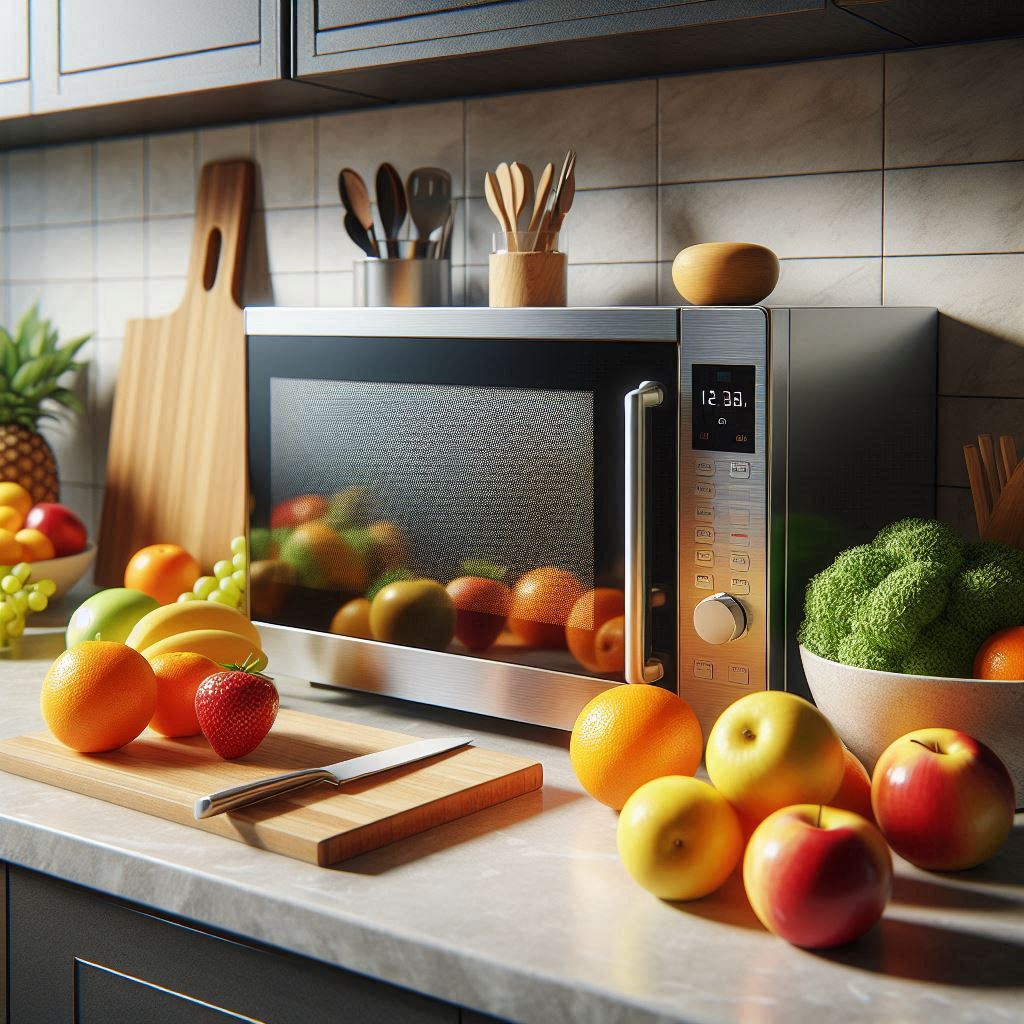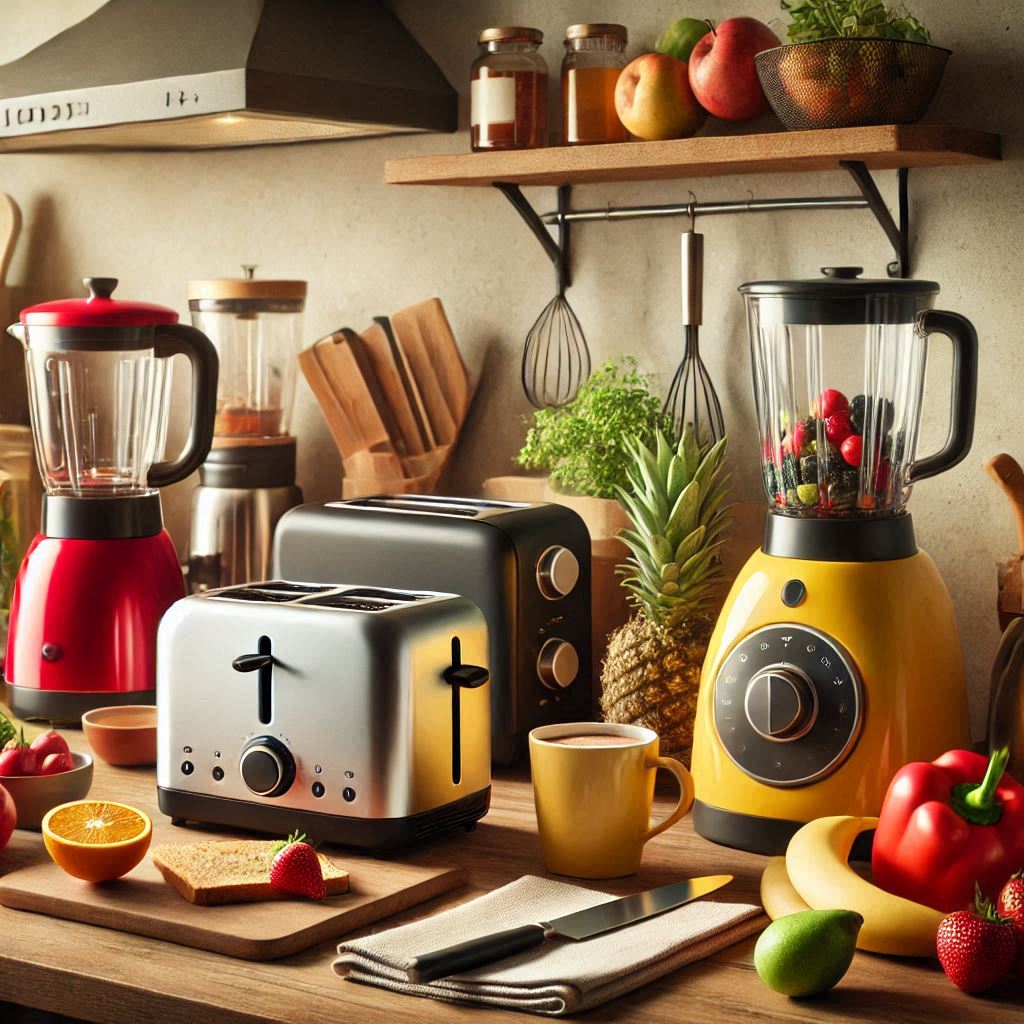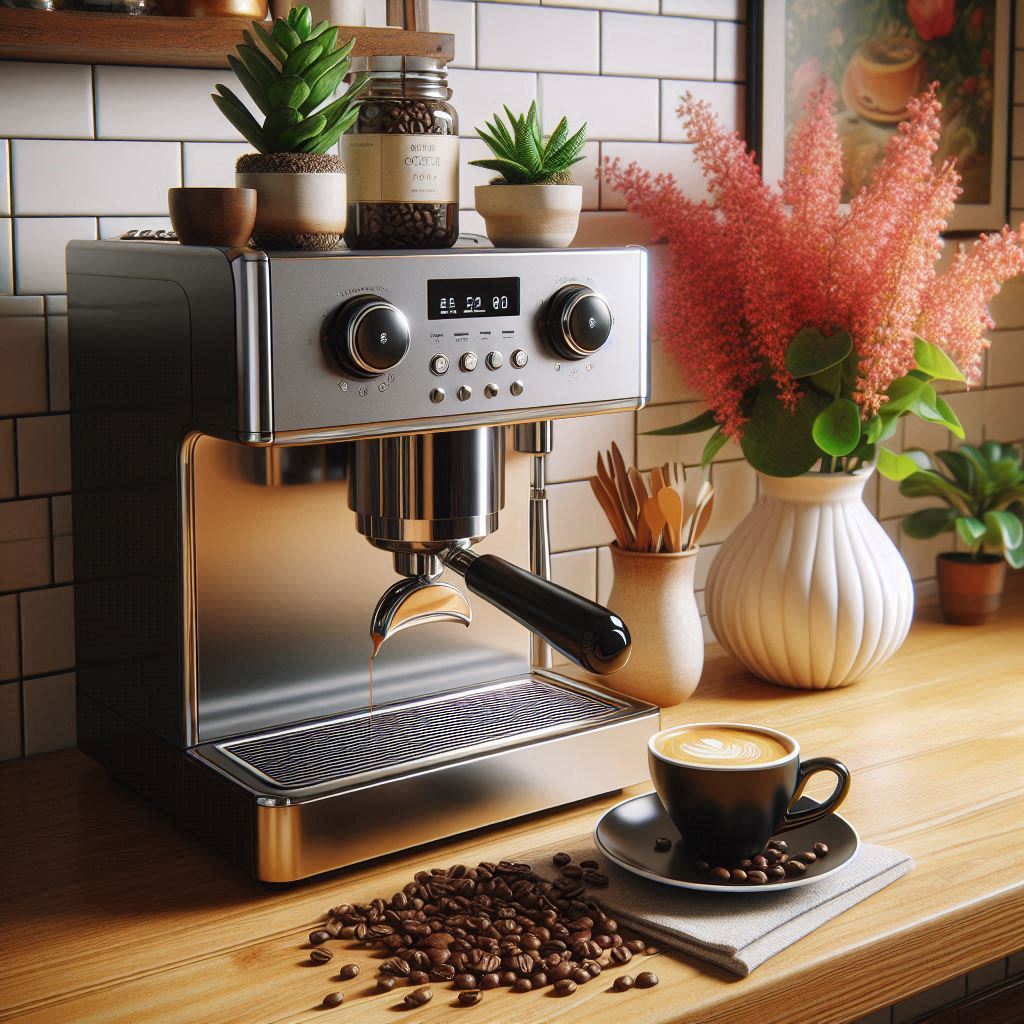Microwaves have become an indispensable appliance in modern kitchens since their accidental invention in 1945 by Percy Spencer. Originally developed from radar technology used during World War II, the microwave oven has evolved from a massive, expensive commercial appliance to a compact, affordable household staple. The journey of the microwave from a wartime discovery to a kitchen essential reflects the rapid technological advancements of the 20th century.
The first commercial microwave, called the “RadaRange,” was introduced in 1946 and was primarily used in restaurants and industrial kitchens due to its size and cost. It wasn’t until the late 1960s that more compact and affordable models began to appear in American homes. The Amana Corporation introduced the first countertop microwave in 1967, marking the beginning of the microwave’s widespread adoption in domestic settings.
By the late 1990s, microwaves had become ubiquitous in American households, with the U.S. Bureau of Labor Statistics reporting that nine out of ten homes owned a microwave. This rapid adoption was driven by the microwave’s ability to quickly and efficiently heat food, as well as technological advancements that made the appliances smaller, safer, and more affordable. Today, microwaves continue to evolve, incorporating new features and technologies to meet the changing needs of modern consumers.
Microwave Features

Modern microwaves come equipped with a variety of features designed to enhance cooking convenience and versatility. One of the most significant advancements is the integration of sensor cooking technology, which detects the moisture and steam levels inside the microwave. This allows the appliance to automatically adjust cooking time and power for optimal results, taking the guesswork out of heating different types of food. Additionally, many microwaves now offer convection cooking capabilities, combining traditional microwave technology with convection heat to enable baking, roasting, and crisping functions.
Another notable feature in contemporary microwaves is the inclusion of pre-programmed settings for popular dishes. These shortcut keys simplify the cooking process for items like popcorn, pizza, and frozen vegetables, ensuring consistent results with minimal user input. Some models also incorporate smart technology, allowing users to monitor and control their microwave remotely via smartphone apps. This integration into the smart home ecosystem reflects the ongoing evolution of microwave technology to meet the demands of tech-savvy consumers.
- Sensor cooking: Automatically adjusts cooking time and power based on food moisture levels.
- Convection capabilities: Enables baking and roasting functions for versatile cooking options.
- Pre-programmed settings: Simplifies cooking of common dishes with one-touch operation.
- Smart technology: Allows remote monitoring and control via smartphone apps.
- Child lock: Prevents accidental operation and ensures safety for households with children.
- Multiple power levels: Provides precise control for different cooking tasks.
- Turntable: Ensures even cooking by rotating food during the heating process.
- Defrost function: Quickly and safely thaws frozen foods.
- Interior lighting: Allows easy monitoring of food while cooking.
- Easy-clean interior: Facilitates simple maintenance and hygiene.
Microwave Benefits
The benefits of microwave ovens extend far beyond their ability to quickly heat food. One of the primary advantages is the significant time savings they offer in meal preparation. Microwaves can cook or reheat food in a fraction of the time required by conventional ovens, making them invaluable for busy households and professionals with limited time for cooking. This efficiency also translates to energy savings, as microwaves typically use less electricity than traditional ovens for heating small portions of food.
Another key benefit of microwaves is their versatility in food preparation. While often associated with reheating leftovers, modern microwaves are capable of a wide range of cooking tasks, from defrosting frozen foods to steaming vegetables and even baking cakes. Advanced models with convection features further expand these capabilities, allowing users to achieve crispy textures and browned surfaces typically associated with conventional ovens. This versatility makes microwaves an excellent complement to traditional cooking methods, offering a quick and convenient alternative for many dishes.
- Time efficiency: Significantly reduces cooking and reheating times compared to conventional methods.
- Energy savings: Uses less electricity than traditional ovens for small portions.
- Versatility: Capable of various cooking tasks beyond simple reheating.
- Space-saving: Compact design ideal for small kitchens or limited counter space.
- Nutrient retention: Short cooking times help preserve nutrients in foods.
- Easy cleaning: Non-stick interiors and removable parts simplify maintenance.
- Safety: Eliminates risks associated with open flames or hot surfaces.
- Consistent results: Provides reliable and repeatable cooking outcomes.
- Convenience: Simplifies meal preparation for busy individuals and families.
- Reduced kitchen heat: Generates less ambient heat than traditional ovens, ideal for warm climates.
Microwave Buying Guide for Types of Microwaves
When buying a microwave, it’s essential to consider factors such as size, power, features, and installation type. The right microwave for your kitchen will depend on your available space, cooking habits, and specific needs. Consider the microwave’s capacity, measured in cubic feet, to ensure it can accommodate your typical meal sizes. Wattage is another crucial factor, as higher wattage generally means faster cooking times and more even heating.
- Countertop microwaves: These standalone units offer flexibility in placement and are ideal for renters or those with limited kitchen space. They come in various sizes and are typically the most affordable option.
- Over-the-range microwaves: Installed above the stove, these models save counter space and often include built-in ventilation systems. They require professional installation but provide a sleek, integrated look.
- Built-in microwaves: Designed to be installed flush with cabinetry, these models offer a premium, seamless appearance. They’re ideal for custom kitchens and often include advanced features but are typically more expensive.
- Drawer microwaves: These units pull out like a drawer, offering easy access and a unique design. They’re great for kitchen islands or under-counter installations but tend to be pricier.
- Convection microwaves: Combining microwave technology with convection heating, these versatile appliances can bake, roast, and crisp food. They’re ideal for those seeking more cooking options in a single appliance.
Key Features to Consider When Buying a Microwave
- Capacity: Choose a size that suits your household needs to avoid overcrowding and ensure even cooking. Consider both interior and exterior dimensions to ensure it fits your space.
- Power: Higher wattage typically means faster cooking times and better performance. Look for models with at least 700 watts for efficient cooking.
- Preset programs: Convenient for quick and easy cooking of common foods. Consider which presets align with your cooking habits.
- Sensor cooking: Automatically adjusts cooking time and power based on food moisture levels. This feature helps prevent overcooking and ensures consistent results.
- Ease of cleaning: Look for models with non-stick interiors and removable turntables. These features simplify maintenance and keep your microwave hygienic.
- Safety features: Consider models with child locks and cool-touch exteriors. These features are especially important in households with young children.
- Noise level: Some microwaves can be noisy during operation. Look for models with quiet operation if noise is a concern in your household.
- Smart features: Wi-Fi connectivity and app control can add convenience. Consider if these features align with your lifestyle and other smart home devices.
- Ventilation: For over-the-range models, check the ventilation capabilities. Ensure it can adequately handle cooking odors and steam from your stovetop.
- Warranty and brand reputation: Choose reputable brands with good customer support and warranty coverage. This can provide peace of mind and protection for your investment.
Top Microwave Brands:
- Panasonic: Known for their innovative inverter technology, Panasonic microwaves offer consistent cooking results and energy efficiency. Their range includes compact countertop models to larger, feature-rich convection microwaves, catering to various needs and preferences.
- Whirlpool: Whirlpool microwaves combine sleek design with practical functionality. Their models often feature sensor cooking technology and steam cooking options, making them ideal for health-conscious consumers who appreciate precise cooking control.
- ,: GE offers a wide range of microwaves, from basic countertop models to advanced over-the-range units. Their appliances are known for durability and user-friendly interfaces, often incorporating convenient features like scan-to-cook technology.
- Samsung: Samsung microwaves stand out with their modern designs and smart features. Many models include Wi-Fi connectivity and integration with other smart home devices, appealing to tech-savvy consumers who value convenience and innovation.
- LG: LG microwaves are recognized for their stylish aesthetics and advanced cooking technologies. Their NeoChef line, in particular, offers precise temperature control and even heating, making them a popular choice for those who prioritize cooking performance and reliability.
Top Microwave Comparisons
| Feature | Panasonic | Whirlpool | GE | Samsung | LG |
|---|---|---|---|---|---|
| Technology | Inverter Technology for even cooking and precise power control | Sensor Cooking with CleanRelease® non-stick interior | Scan-to-Cook Technology for precise cooking instructions | Smart Sensors and ceramic enamel interior | NeoChef Technology with Smart Inverter for even heating |
| Capacity | 1.2 – 2.2 cu. ft. | 1.6 – 1.9 cu. ft. | Varies by model, typically 1.6 – 2.0 cu. ft. | Varies by model, typically 1.4 – 2.1 cu. ft. | 1.5 – 2.0 cu. ft. |
| Power Output | 1200-1250 Watts | 1000 Watts | Typically 1000-1200 Watts | 1000-1200 Watts | 1200 Watts |
| Special Features | Turbodefrost, Genius Sensor, Cyclonic Wave Technology | Steam Cooking, Turntable On/Off Option, Ventilation System | Melt, Soften, Defrost Options; Child Lock Safety Features | Wi-Fi Connectivity, Slim Fry Technology (in some models) | Sleek design with EasyClean interior and humidity sensors |
| User Interface | Tactile buttons with digital display and preset menus | Simplified electronic touch controls with presets | User-friendly controls with clear digital display | Touchscreen controls with smart app integration (in some models) | Smooth touch controls with LED display and presets |
Conclusion
Microwaves have come a long way since their accidental invention in the 1940s. From bulky, expensive commercial appliances to sleek, feature-rich household essentials, they have evolved to meet the changing needs of consumers. Today’s microwaves offer a perfect blend of convenience, efficiency, and versatility, making them indispensable in modern kitchens.
As technology continues to advance, we can expect to see further innovations in microwave design and functionality. From improved energy efficiency to more sophisticated cooking algorithms and smart home integration, the future of microwave technology looks promising. Whether you’re a busy professional looking for quick meal solutions or a culinary enthusiast exploring new cooking techniques, there’s a microwave out there to suit your needs and enhance your kitchen experience.
FAQs:
How do microwaves work?
Microwaves use electromagnetic waves to heat food by causing water molecules to vibrate, producing heat.
Are microwaves safe to use?
Yes, microwaves are safe when used properly and maintained according to manufacturer instructions.
Can you put metal in a microwave?
Generally, it’s not recommended to put metal in a microwave as it can cause sparking and damage the appliance.
How long do microwaves typically last?
With proper care, a quality microwave can last 9-10 years on average.
Do microwaves kill nutrients in food?
Microwaves generally preserve nutrients better than many conventional cooking methods due to shorter cooking times.
Can you cook raw meat in a microwave?
While possible, it’s challenging to cook raw meat evenly in a microwave and may result in uneven cooking or food safety issues.
How do I clean my microwave?
You can clean a microwave by heating a bowl of water and vinegar, then wiping the interior with a damp cloth.
What’s the difference between a convection microwave and a regular microwave?
Convection microwaves have an additional heating element and fan, allowing them to bake and roast food like a conventional oven.
Are more expensive microwaves worth it?
Higher-priced microwaves often offer more features, better performance, and durability, which can be worth the investment for frequent users.
Can microwaves interfere with Wi-Fi signals?
While both use electromagnetic waves, modern microwaves are well-shielded and typically don’t interfere with Wi-Fi signals.















